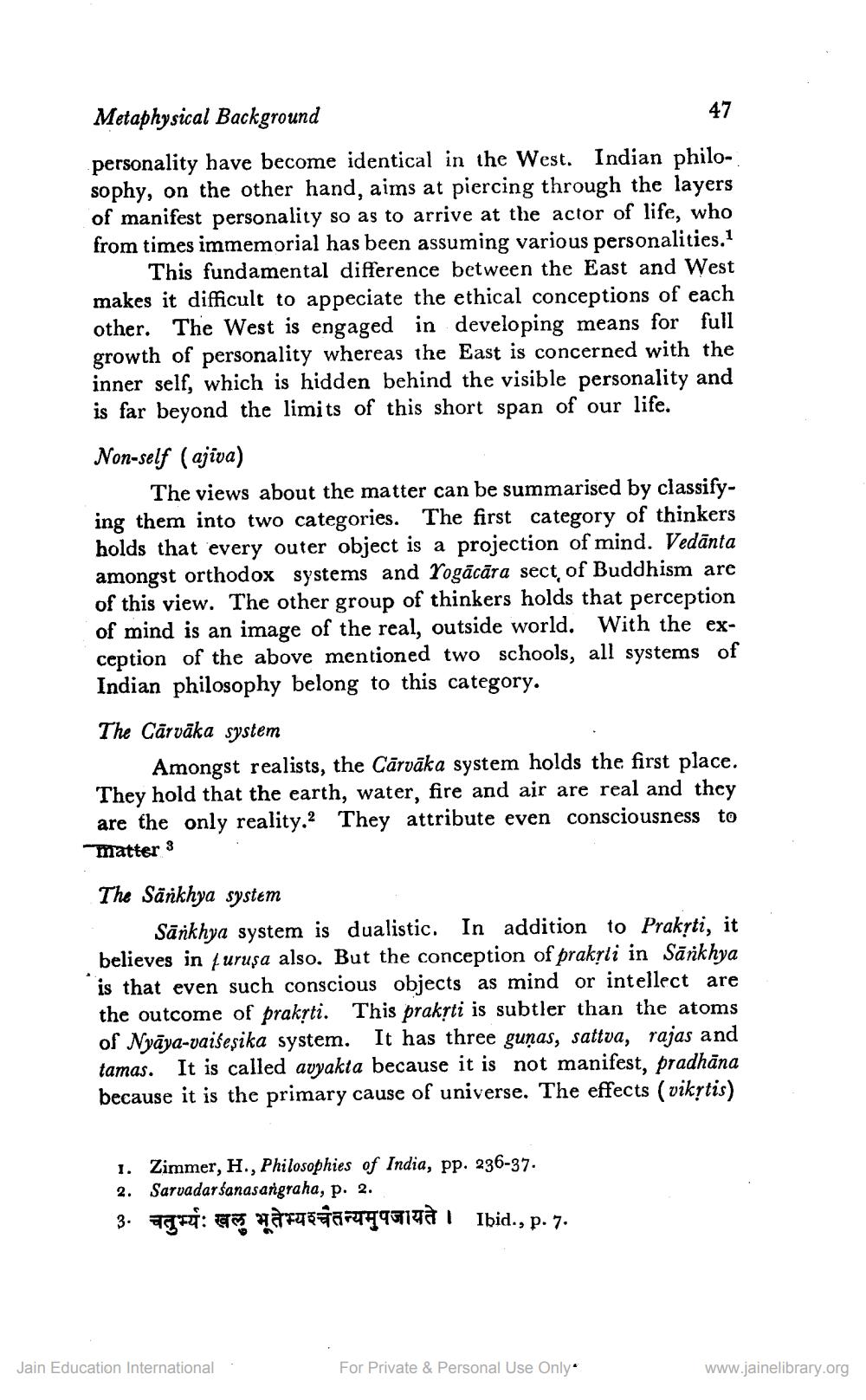________________
47
Metaphysical Background personality have become identical in the West. Indian philosophy, on the other hand, aims at piercing through the layers of manifest personality so as to arrive at the actor of life, who from times immemorial has been assuming various personalities.'
This fundamental difference between the East and West makes it difficult to appeciate the ethical conceptions of each other. The West is engaged in developing means for full growth of personality whereas the East is concerned with the inner self, which is hidden behind the visible personality and is far beyond the limits of this short span of our life.
Non-self (ajiva)
The views about the matter can be summarised by classifying them into two categories. The first category of thinkers holds that every outer object is a projection of mind. Vedānta amongst orthodox systems and Yogācāra sect of Buddhism are of this view. The other group of thinkers holds that perception of mind is an image of the real, outside world. With the exception of the above mentioned two schools, all systems of Indian philosophy belong to this category. The Cārvāka system
Amongst realists, the Cārvāka system holds the first place. They hold that the earth, water, fire and air are real and they are the only reality. They attribute even consciousness to matter 3
The Sänkhya system
Sārkhya system is dualistic. In addition to Prakyti, it believes in furuşa also. But the conception of praksli in Sārkhya is that even such conscious objects as mind or intellect are the outcome of praksti. This praksti is subtler than the atoms of Nyāya-vaiseșika system. It has three guņas, sattva, rajas and tamas. It is called avyakta because it is not manifest, pradhāna because it is the primary cause of universe. The effects (vikytis)
1. Zimmer, H., Philosophies of India, pp. 236-37. 2. Sarvadarśanasangraha, p. 2. 3. Tart: narogareiri i Ibid., p. 7.
Jain Education International
For Private & Personal Use Only
www.jainelibrary.org




